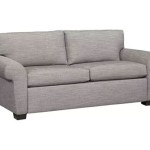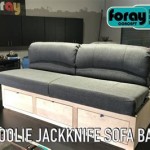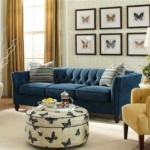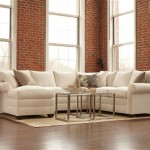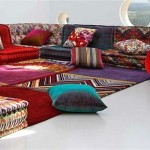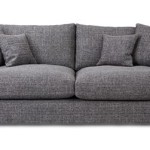The Enduring Appeal of the Timothy Oulton Shabby Sofa
The Timothy Oulton brand is synonymous with distinctive furniture design, blending vintage aesthetics with contemporary craftsmanship. Among its diverse collection, the "shabby" sofa stands out as a particularly compelling piece, capturing the essence of relaxed elegance and offering a unique textural experience. This article will delve into the characteristics, construction, and appeal of the Timothy Oulton shabby sofa, exploring the elements that contribute to its enduring popularity and examining considerations for potential owners.
The term "shabby" in this context is not indicative of poor quality or neglect. Instead, it refers to a specific design philosophy that embraces imperfections and celebrates the beauty of time-worn materials. Unlike pristine, perfectly uniform furniture, the Timothy Oulton shabby sofa showcases variations in texture, color, and finish, deliberately creating a sense of history and character. This aesthetic aligns with broader trends in interior design that favor authenticity, individuality, and the integration of vintage or antique elements into modern living spaces.
The allure of a shabby sofa extends beyond mere aesthetics. It also represents a shift in lifestyle, away from formality and towards comfortable, lived-in environments. These sofas are designed to be inviting and relaxing, encouraging lounging and creating a welcoming atmosphere in any room. The tactile nature of the materials used further enhances this sense of comfort, making the sofa a central focal point for relaxation and social interaction.
Materiality and Construction: The Foundation of the Shabby Aesthetic
The materials used in the construction of a Timothy Oulton shabby sofa are crucial to achieving its signature look and feel. Linen is a prevalent choice, favored for its natural texture, breathability, and propensity to soften and develop a unique patina over time. Other materials, such as distressed leathers, reclaimed woods, and aged metals, may also be incorporated to enhance the overall aesthetic and provide visual contrast.
The specific type of linen utilized further influences the sofa's appearance and durability. Higher-quality linens, often sourced from Europe, are characterized by longer fibers and tighter weaves, resulting in a more resilient and luxurious fabric. These linens are typically pre-washed or treated to enhance their softness and minimize shrinkage, ensuring that the sofa retains its shape and comfort over years of use.
The construction of the sofa is equally important in determining its long-term performance and aesthetic appeal. Timothy Oulton sofas are typically built with solid hardwood frames, providing a strong and stable foundation. The frame is then reinforced with corner blocking and other structural elements to prevent warping or sagging over time. Spring systems, such as traditional eight-way hand-tied springs or modern sinuous springs, are carefully chosen to provide optimal support and comfort. The spring system is then covered with layers of padding, including high-density foam, down feathers, and other materials, to create a plush and inviting seating surface.
The upholstery process is where the "shabby" aesthetic truly comes to life. Skilled artisans carefully apply the chosen fabric to the frame, paying close attention to detail and creating subtle variations in texture and pleating. Distressing techniques, such as sanding, washing, or dyeing, may be employed to further enhance the fabric's aged appearance. These techniques are applied in a controlled and deliberate manner, ensuring that the resulting imperfections are both aesthetically pleasing and structurally sound.
The finishing touches, such as nailhead trim, button tufting, or decorative stitching, are also carefully considered to complement the overall design and enhance the sofa's visual appeal. These details are often applied by hand, further emphasizing the craftsmanship and attention to detail that characterize Timothy Oulton furniture.
Key Design Elements and Variations within the Shabby Style
While the term "shabby" implies a certain degree of uniformity, Timothy Oulton offers a range of variations within this style, allowing customers to choose a sofa that best suits their individual tastes and interior design preferences. These variations primarily manifest in the following design elements:
Fabric Choice: Linen remains a cornerstone material, but the specific type, color, and texture of the linen can significantly impact the sofa's appearance. Options range from light, airy linens in neutral tones to heavier, more textured linens in darker hues. Some sofas may also incorporate contrasting fabrics, such as velvet or leather, to add visual interest and create a more eclectic look.
Frame Style: The shape and silhouette of the sofa frame also contribute to its overall aesthetic. Some shabby sofas feature classic, traditional frames with rolled arms and high backs, while others embrace more contemporary designs with clean lines and low profiles. The frame style can be further customized with different leg options, such as turned wood legs, metal legs, or even hidden legs for a more streamlined look.
Distressing Techniques: The degree and type of distressing applied to the fabric can also vary. Some sofas feature subtle distressing, with only minor variations in color and texture, while others showcase more pronounced imperfections, such as visible wear and tear, intentional fraying, or patched repairs. The choice of distressing technique depends on the desired level of "shabbiness" and the overall aesthetic goal.
Detailing: The use of nailhead trim, button tufting, and other decorative details can also significantly impact the sofa's appearance. Nailhead trim can be applied in a variety of patterns and styles, from traditional rows to more intricate designs. Button tufting adds a sense of depth and texture to the sofa, while decorative stitching can provide a subtle yet elegant finishing touch.
By carefully considering these design elements, customers can create a Timothy Oulton shabby sofa that perfectly reflects their individual style and complements their existing décor. The versatility of the "shabby" aesthetic allows for seamless integration into a wide range of interior design styles, from rustic and farmhouse to bohemian and eclectic.
Considerations for Owning a Shabby Sofa
While the Timothy Oulton shabby sofa offers a unique blend of style, comfort, and durability, potential owners should be aware of certain considerations before making a purchase. These considerations primarily relate to maintenance, cleaning, and the inherent characteristics of the materials used.
Maintenance: Linen, while durable, is a natural fiber that requires regular maintenance to prevent staining and fading. Vacuuming the sofa regularly with a soft brush attachment helps to remove dust and debris, preventing them from becoming embedded in the fabric. It is also advisable to avoid placing the sofa in direct sunlight, as prolonged exposure can cause the fabric to fade over time.
Cleaning: Stains should be treated promptly to prevent them from setting. Blot the stain with a clean, absorbent cloth, working from the outside in to prevent spreading. Avoid rubbing the stain, as this can damage the fabric fibers. For stubborn stains, professional cleaning is recommended. It is important to choose a cleaning service that specializes in cleaning natural fibers, such as linen, to avoid damaging the fabric.
Material Characteristics: The "shabby" aesthetic is inherently characterized by imperfections and variations in texture and color. These imperfections are not defects but rather a deliberate design choice that contributes to the sofa's unique character. Potential owners should be aware of these characteristics and embrace them as part of the sofa's overall charm. Over time, the fabric may develop additional imperfections, such as wrinkles, creases, or subtle color variations. These imperfections are a natural result of use and aging and should not be considered defects.
Pet Ownership: While the distressed nature of a shabby sofa can be forgiving of minor scratches or wear from pets, it is still important to take precautions to protect the fabric from damage. Regular grooming can help to minimize shedding, while covering the sofa with a throw or blanket can provide an extra layer of protection. It is also advisable to train pets to avoid scratching or chewing on the sofa.
By understanding these considerations, potential owners can make an informed decision about whether a Timothy Oulton shabby sofa is the right choice for their needs and lifestyle. With proper care and maintenance, these sofas can provide years of comfort and enjoyment, becoming cherished pieces of furniture that add character and style to any home.

Timothy Oulton Shabby Sectional Sofa Aspire Design And Home

Timothy Oulton Shabby Sectional Sofa Aspire Design And Home

Shabby Sofa By Timothy Oulton Archipro

Sofas By Timothy Oulton Jane Mcintyre Design

Shabby Modular Sofa By Timothy Oulton Dawson And Co Auckland

Timothy Oulton Shabby Sectional 2 Seater Buff Burnished Nutmeg Barker Stonehouse

Timothy Oulton Studio In Conversation With Architectural Digest

Timothy Oulton Shabby Corner Sofa Heal S

Timothy Oulton Shabby Leather Modular Sofa Lot Co

